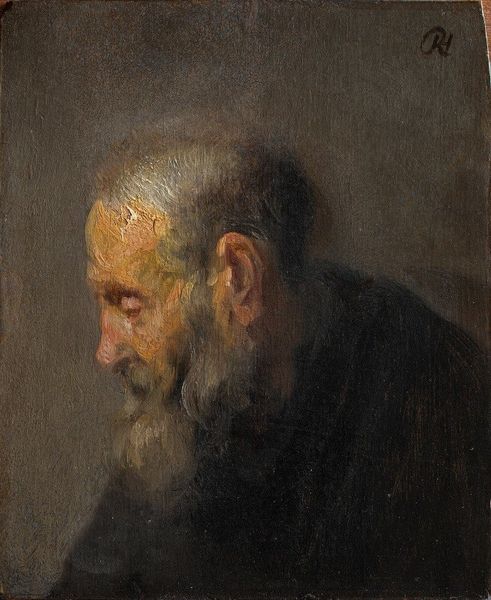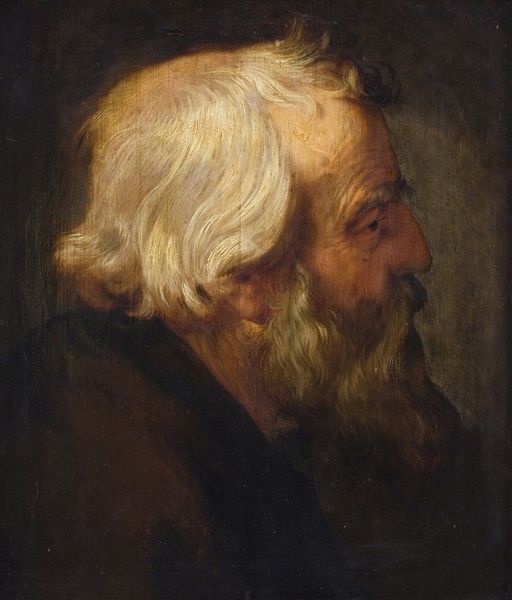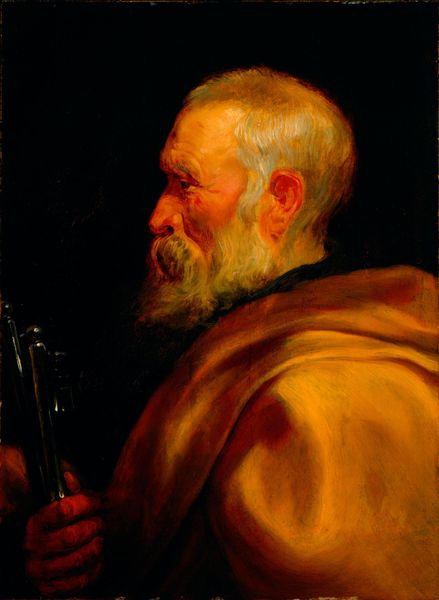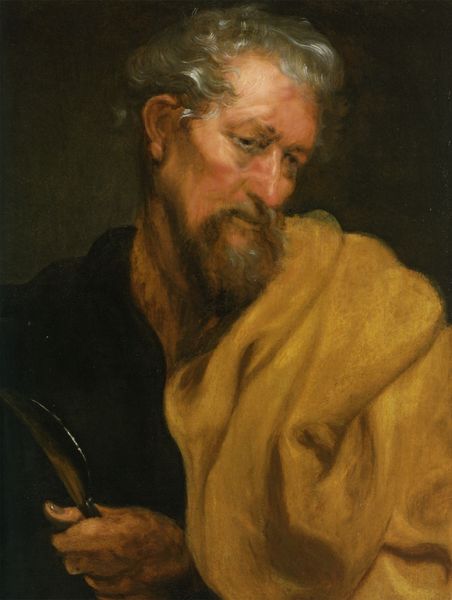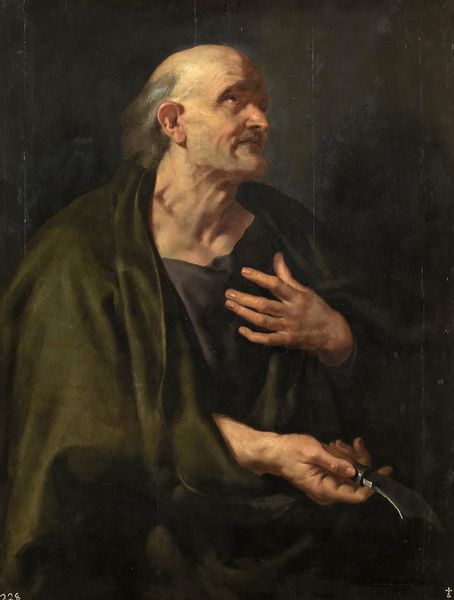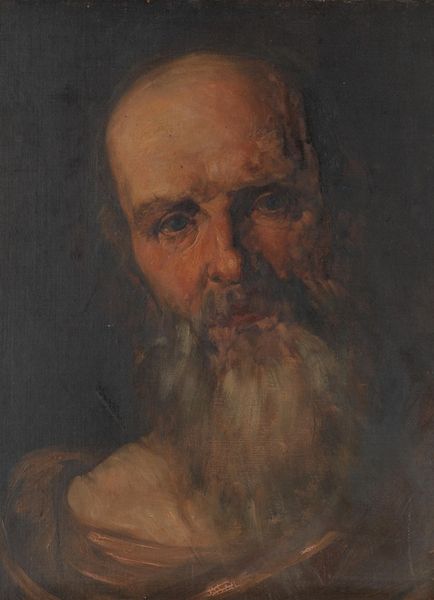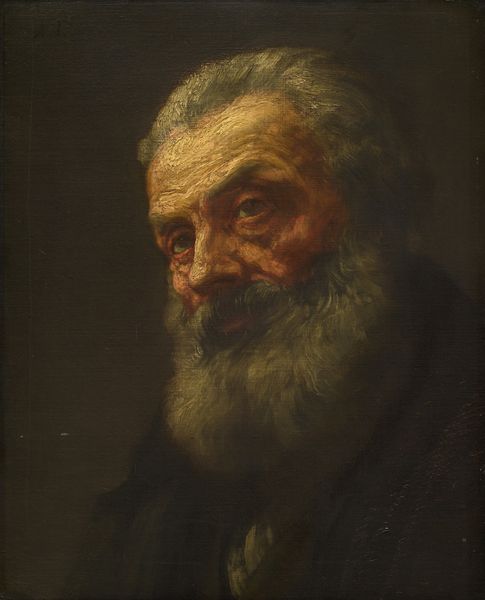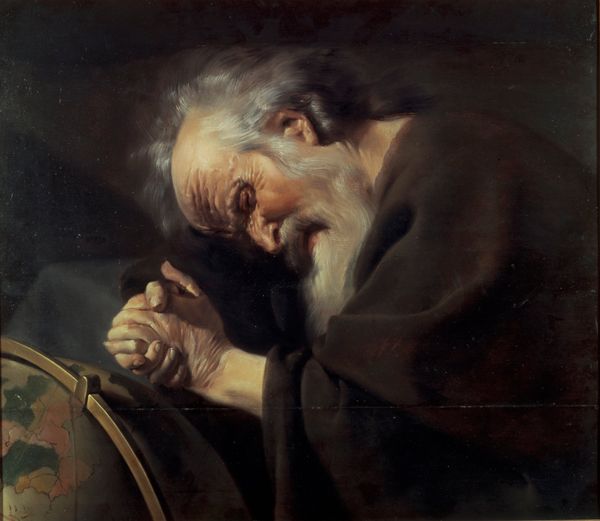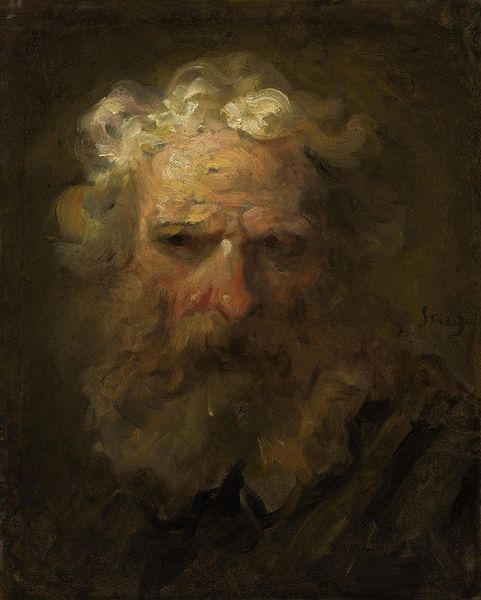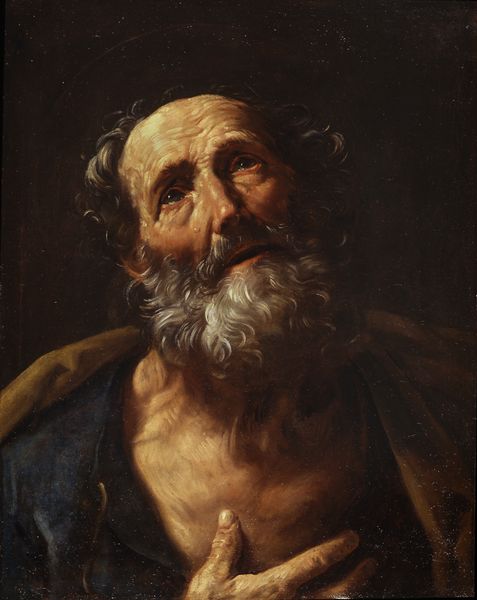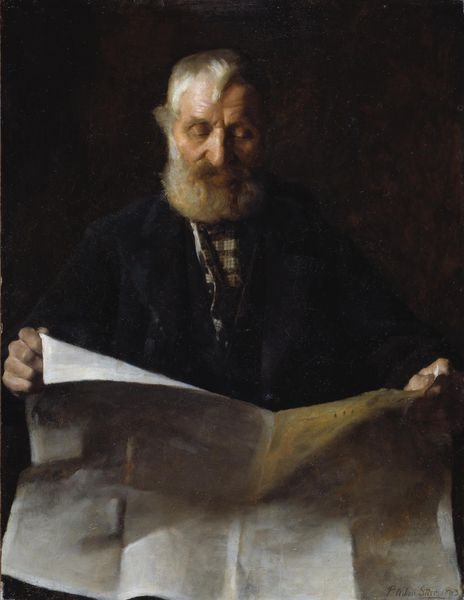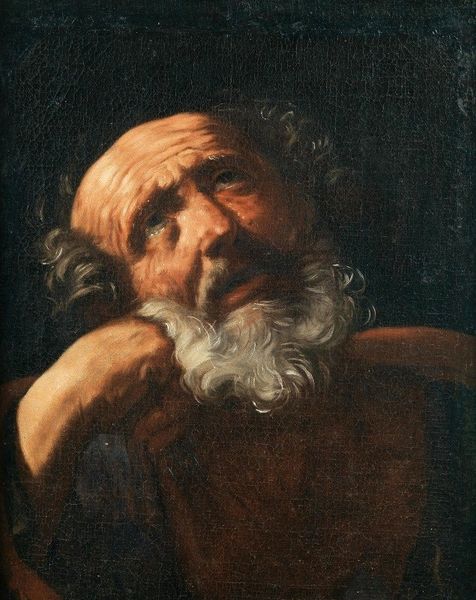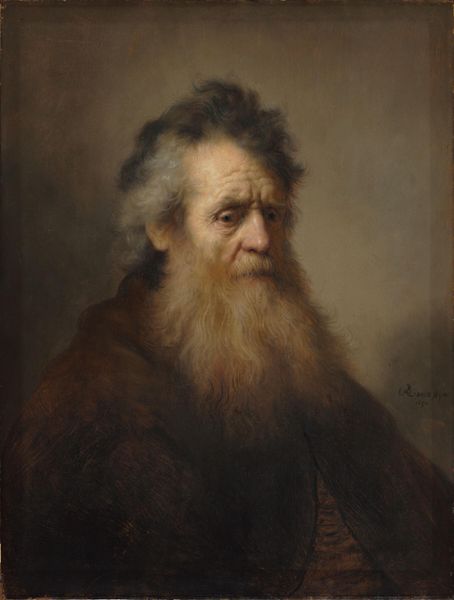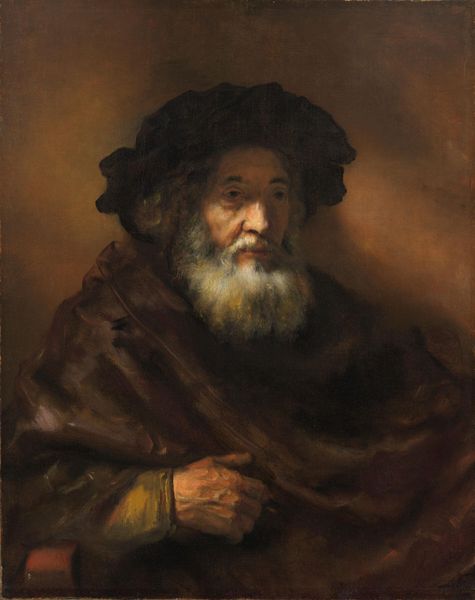
painting, oil-paint, impasto
#
portrait
#
baroque
#
portrait
#
painting
#
oil-paint
#
impasto
#
chiaroscuro
#
realism
Copyright: Public domain
Editor: We're now looking at "Old Man's Head," a painting by Jan Lievens, currently held at the Palais des Beaux-Arts de Lille. It seems to be an oil painting, worked in an impasto style with lots of chiaroscuro. What strikes me most is the way light illuminates his face against the dark background, highlighting every line and wrinkle. What do you see in this piece? Curator: The "Old Man's Head" is a window into the symbolic language of age and experience. The upward gaze is especially interesting. Is it piety? Hope? Or perhaps he's looking towards the heavens or a lost loved one? Consider the beard too: a traditional signifier of wisdom, it tells a silent story of years gone by. Editor: It’s fascinating to consider the upward gaze as symbolic. The focus on realism through the impasto technique seems at odds with such symbolism, though, doesn't it? Is he just an old man, or is he supposed to represent something more? Curator: Realism itself becomes a powerful symbol when placed within a cultural context. Lievens, like Rembrandt, wasn't merely depicting wrinkles, but evoking empathy and a connection to universal human experiences. The heavy use of chiaroscuro enhances this – light emerging from darkness can symbolize enlightenment, knowledge gained through the passage of time, and the eventual confrontation with mortality. What emotions does that juxtaposition elicit for you? Editor: It does make me think about how societies revere elders. It speaks to how visual elements create a link between generations through time. Thanks for expanding my perspective on how realism and symbolism intertwine to enrich this piece. Curator: My pleasure. Reflecting on this work, I realize how much portraiture can tell us about the human condition. A silent dialogue across centuries!
Comments
No comments
Be the first to comment and join the conversation on the ultimate creative platform.
